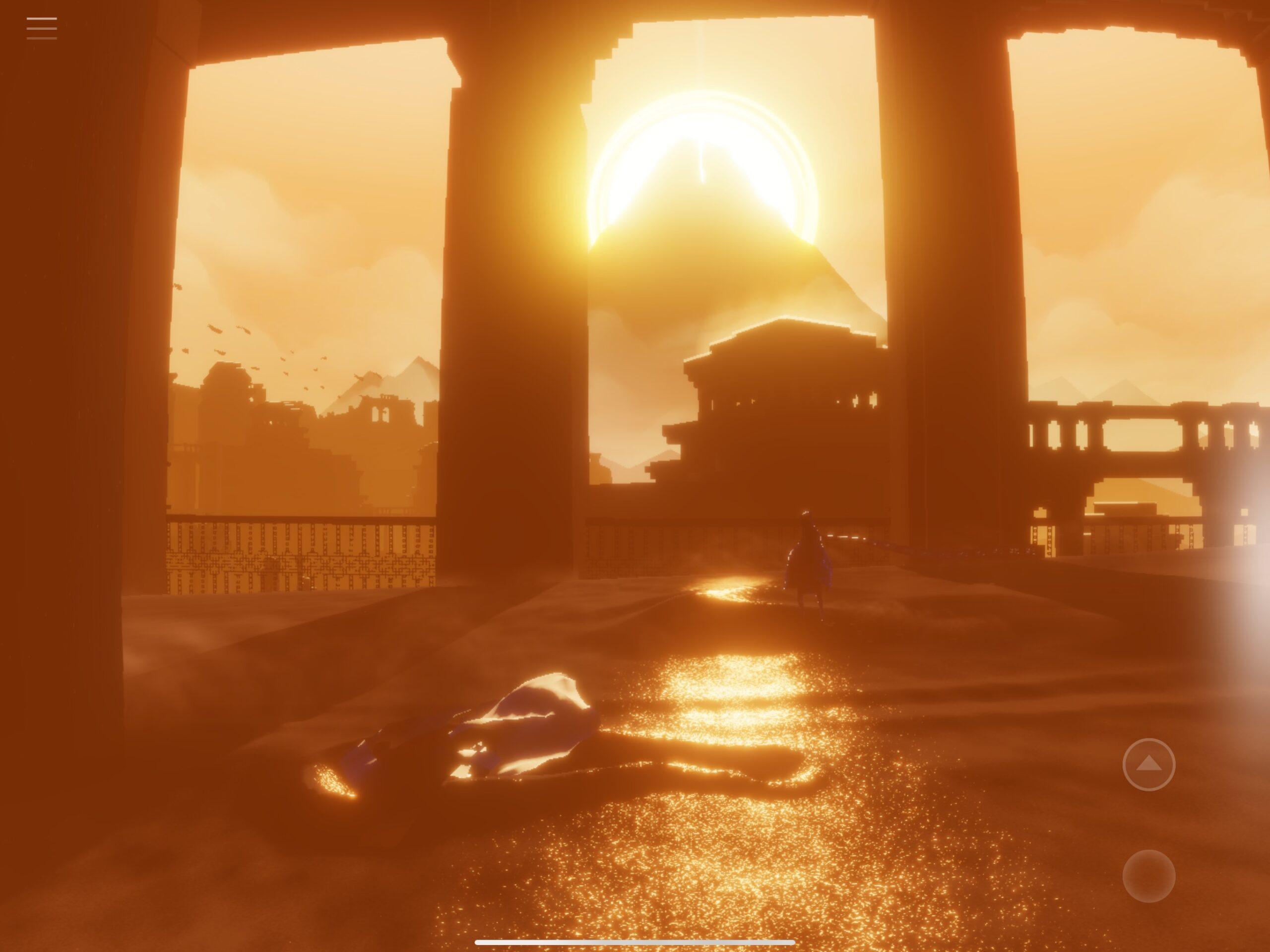For this week’s critical play on walking simulators, I decided to play the game Journey. Journey is a wordless exploration game where the player wanders a vast world either alone or with a companion in order to to discover its secrets. The game runs on various platforms, including console, PC, and even iOS. Journey appeals to a wide audience, from taking in younger children with the simple graphics and mechanics to adults who may be swayed by the musical score and narrative created along the journey. I argue that Journey‘s minimalistic design hinges on the walking mechanic to build a vast narrative on the act of exploration.
In Journey, walking allows players to fully experience the world. Unlike fast-paced games players may zoom through, the deliberate, slower pace of walking forces players to be present in the game. Each of the vast deserts, the towering ruins, the surreal underwater space, and the treacherous snowy mountain scenes unfolds at the player’s pace and allows the player to understand the scale of these structures. This, combined with the lack of words or instructions, allows for a deep immersion into the game’s breathtaking visuals and soundscapes. Small details, like the shifting of the sand as the player walks or the intricate symbols that fly around the player, simply become part of the narrative. The player is able to discover a sense of history through these details, and as a result, players are able to piece together the story of a lost civilization.

[Beautiful sunset scene of the city]
Walking in Journey also facilitates a deeper connection with exploration itself. In the game, there are no maps or clear directions, only the mountain peak that guides the player forward. Players must rely on intuition and observation of the world’s surroundings, which is supported by the slower pace of walking and the short bursts of flight. This sense of discovery is heightened by the game’s minimalist approach to interaction, which encourages players to immerse themselves fully in their surroundings and to embrace the unknown in the world.

[Another player and I lost in the desert]
One particular moment that exemplified this idea was in the third stage. I was stranded in the middle of the desert without a sense of direction to go and was quite uncertain of our next move. However, after wandering around, I noticed one of the banners pointing toward a random direction on the horizon. Although it felt like a long shot at the time, because there was no other sign leading us in the area, we just started wandering in the general direction. Apparently, this was the correct decision as we hit our next waypoint not long after!
While walking is often a solitary act in Journey, the possibility of encountering another player adds a unique twist and further enhances the narrative significance of walking. Players may encounter fellow travelers along the way, their paths converging briefly to help one another before the other player inevitably disconnects. Even in the absence of direct communication, just the act of walking with another player allows players to form strong bonds with each other and progress through the storyline together. These chance meetings foster a sense of shared purpose as players collaborate to overcome obstacles and reach the next stage of the environment.

[Another player and I after we solved a puzzle]
Overall, Journey‘s minimalist design is emphasized by the act of walking through various scenes. By forcing players to slow down and truly experience the world, the game builds a powerful narrative that players are able to enjoy with minimal hindrances.



